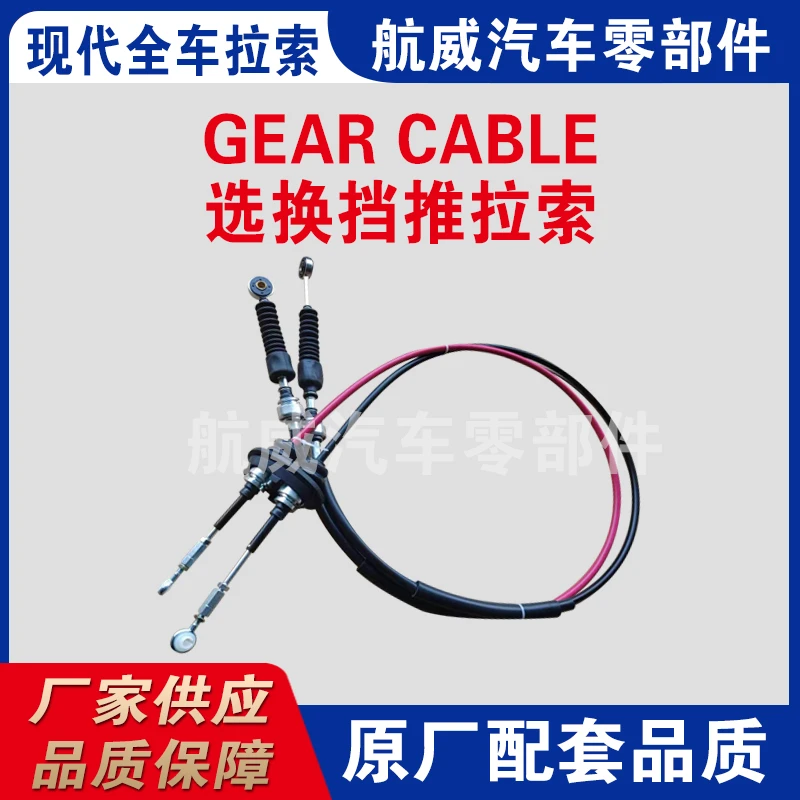rear handbrake cable
Understanding the Rear Handbrake Cable Importance, Function, and Maintenance
The rear handbrake cable, commonly known as the emergency brake cable, is an integral component of a vehicle’s braking system. While most drivers are primarily concerned with the main braking system, the handbrake plays a crucial role in vehicle safety and control, particularly when parking or in emergency situations. Understanding the function, importance, and maintenance of the rear handbrake cable can enhance vehicle performance and safety.
Function of the Rear Handbrake Cable
The primary function of the rear handbrake cable is to engage the rear brakes independently of the foot brake. When you pull the handbrake lever inside the vehicle, the cable transmits that force to the rear brakes. This is essential for securing the vehicle when parked, preventing it from rolling away on an incline. Additionally, in case of failure of the main braking system, a well-functioning handbrake can provide crucial stopping power and control, allowing the driver to bring the vehicle to a halt safely.
Importance of the Rear Handbrake Cable
The rear handbrake cable contributes significantly to overall vehicle safety. A malfunctioning handbrake can lead to disastrous consequences, such as the vehicle rolling away unexpectedly. Regularly checking and maintaining the handbrake system can prevent accidents and enhance driving security. For drivers who live in hilly areas, a functional handbrake is particularly critical; it provides the assurance that the vehicle will remain stationary even on steep grades.
Moreover, the handbrake serves another important function by allowing for controlled skidding in certain driving situations, such as during tight cornering or on low-grip surfaces. Understanding how to effectively use the handbrake in these scenarios can improve driving techniques and contribute to overall vehicle control.
Maintenance of the Rear Handbrake Cable
rear handbrake cable

Maintaining the rear handbrake cable is essential for ensuring its longevity and proper function. Here are several key maintenance tips
1. Regular Inspection Regularly inspect the handbrake cable for any signs of wear or damage. Look for fraying, rust, or kinks in the cable. If any damage is noticed, the cable should be replaced immediately to avoid compromising the vehicle's safety.
2. Adjustment The tension of the handbrake cable may need adjustment from time to time. If you notice that the handbrake lever pulls up higher than usual without engaging the brakes, it may be time to adjust the cable to restore its effectiveness.
3. Lubrication Ensure that the cable is adequately lubricated. A dry or rusted cable can lead to sticking or failure to engage the brakes properly. Using a suitable lubricant can help maintain smooth operation.
4. Professional Check If unsure about the condition of your handbrake cable, or if you're experiencing issues with your handbrake, it's wise to have it checked by a professional mechanic. Regular servicing can catch potential problems before they escalate.
5. Testing the Handbrake After any maintenance or adjustments, properly test the handbrake before relying on it. Engage the handbrake while on an incline to ensure it holds the vehicle securely.
Conclusion
The rear handbrake cable, although often overlooked, is a vital component of vehicle safety. Its ability to secure a parked vehicle and provide additional stopping power in emergencies underscores its importance. By understanding its function and committing to regular maintenance, drivers can ensure their handbrake system operates effectively, safeguarding against potential hazards on the road. Always remember that a well-maintained handbrake is a key element in overall vehicle safety and performance.
-
Workings of Clutch Pipe and Hose SystemsNewsJun.04,2025
-
The Inner Workings of Hand Brake Cable SystemsNewsJun.04,2025
-
The Secrets of Throttle and Accelerator CablesNewsJun.04,2025
-
The Hidden Lifeline of Your Transmission Gear Shift CablesNewsJun.04,2025
-
Demystifying Gear Cables and Shift LinkagesNewsJun.04,2025
-
Decoding Clutch Line Systems A Comprehensive GuideNewsJun.04,2025
